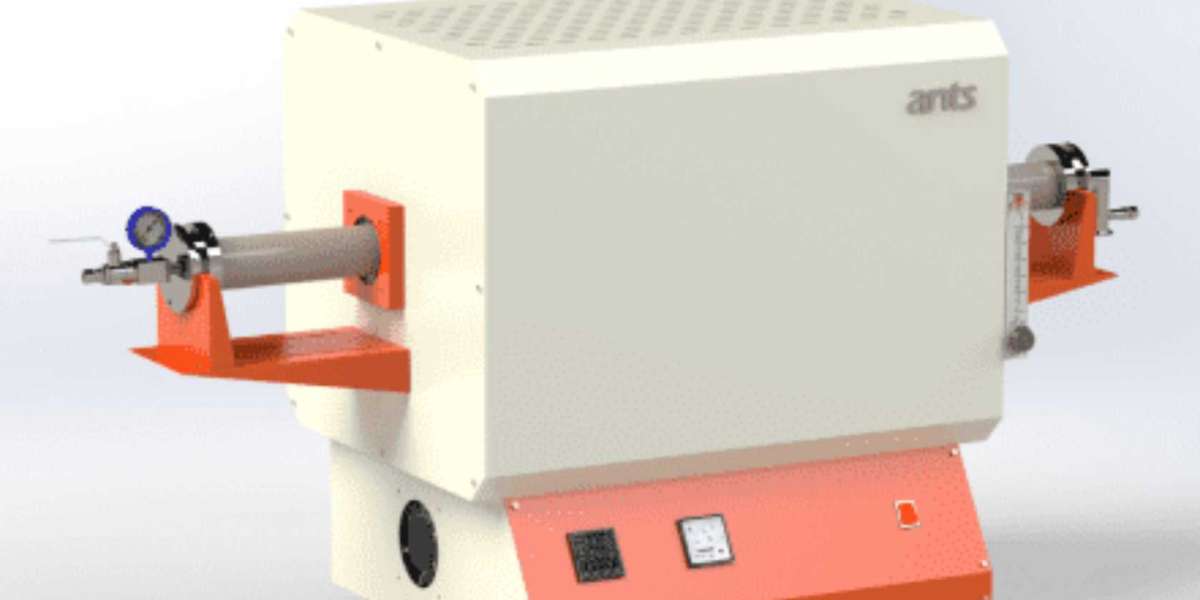The selection of the most suitable tube furnace to your laboratory is essential to ensure accurate temperatures, superior research outcomes, as well as operating efficiency. With different sizes, types and configurations to choose from it is essential to know how to use them and then match them to the task that you have to complete. This article will offer an extensive guideline on the factors to take into consideration when selecting the best tube furnace for your requirements.
1. Understand Your Application Requirements
Different laboratories have their own unique functions and each requires particular features of tubes furnaces. Are you performing thermal treatment such as calcination, annealing, or both? Understanding the primary purpose will help narrow down the requirements needed, including:
- Operational temperature range
- The type of gas in question (inert and reactive gas)
- Size of the sample and volume
- Heating uniformity is a must
For fragile materials such as ceramics and advanced composites, accurate temperature control is essential for temperature control, while routine tasks may only require basic temperature control. Make sure to ensure that the capabilities of the furnace with the work your lab does to avoid inefficiencies during operation.
2. Choose the Right Temperature Range and Accuracy
The temperature range of tube furnaces differs in some models, offering the range of the ambient temperature to 1200 degrees Celsius or more, whereas high-temperature models can have a temperature range of 1600degC or more. A precise temperature control is crucial for any experiment that requires:
- Sintering and the synthesis of material
- Thermal decomposition processes
- Metals are reduced or oxidized.
Check your temperatures uniformity throughout the heat zone. If your process requires consistent heat distribution, choose multi-zone tube furnaces that guarantees temperature uniformity. Also, select one that comes with digital temperature controllers to make precise adjustments.
3. Consider Furnace Tube Material and Diameter
The materials and the size in the size of the furnace tubes play a significant aspect in achieving desired outcomes. The most common tube materials are:
- Quartz is suitable for high-purity applications, and is resistant to radiation from infrared.
- Alumina Alumina is perfect for applications requiring high-temperature and resistance to chemical.
- Stainless Steel: It is used to work with gaseous reactive substances as well as at low temperatures.
The size of the tube is determined by the size of the sample as well as experimental requirements. A tube with a larger diameter will allow larger sample volumes, but can impact the efficiency of heating. Choose a tube that can accommodate the size of your sample while retaining the best heating properties.
4. Decide Between Horizontal or Vertical Orientation
Tube furnaces are available in vertical and horizontal configurations and are suited for various uses.
- Horizontal Tube Furnaces Perfect to use for constant heat processes, like metal oxidation or material sintering.
- Vertical Tube Furnaces are better suited to experiments in which gravity plays a key role, for example the growth of crystals as well as the diffusion of heat.
Select the one that is most compatible with the workflow and configuration of your lab. Some models that are more advanced also provide mechanism for tilting to maximize the advantages from both directions.
5. Assess Atmosphere Control Capabilities
A variety of research projects require controlled environments to obtain specific results. Tube furnaces typically allow for different atmospheric conditions, including:
- Inert (argon, nitrogen): To prevent oxidation during high-temperature processes.
- Reactive (oxygen hydrogen): For processes such as reduction and oxidation.
- Vacuum is used to remove contaminants and create ultra-pure environments.
Choose a furnace with sealed tube tubes that are gas sealed and vacuum pump for experiments that require an inert or vacuum atmosphere. This can improve the results of your experiments and will prevent unwanted reactions.
6. Evaluate the Heating Elements
Heating elements directly influence your furnace's maximum temperature and its longevity. Common heating elements include:
- Kanthal (FeCrAl): Durable and cost-effective, suited for temperatures of up to 1300degC..
- Silicon Carbide (SiC) Best suited for temperatures ranging from 1400degC to 1600degC..
- Molybdenum Disilicide (MoSi2): Capable of handling temperatures as high as 1800°C for applications with high temperatures.
Make sure that the material used for heating corresponds to the temperature of operation in conjunction with the selected tube for your furnace.
7. Prioritize Safety Features and Compliance
Security is essential when working in a laboratory. Make sure the furnace you choose is compliant with internationally recognized safety guidelines (like CE or ISO certifications) and comes with options like:
- Protection against over-temperature to avoid overheating.
- Automated shut-off mechanisms when malfunctions occur.
- Protection from heat loss to reduce heat loss and ensure security for users.
Also, think about the ergonomic design and furnaces that have cooling-touch surfaces for a safer handling operations.
8. Choose the Right Control System and Automation Options
Modern tube furnaces provide sophisticated control systems to automatize processes and guarantee precise temperature control. Consider features such as:
- PID controllers that have different heating programs.
- Ethernet as well as USB connectivity to record data
- The ability to monitor remotely to manage the furnace from afar
Automation options can improve efficiency and decrease human error, thereby making your lab operations more efficient.
9. Evaluate Energy Efficiency and Maintenance Needs
Energy efficient tube furnaces can drastically reduce operating costs over the long-term. You should look for:
- Insulation with low thermal mass to limit heat loss.
- Heating elements that are energy efficient that produce high power without consuming a lot of energy.
Additionally, take into consideration your need for regular maintenance. Furnace with parts that are modular are simpler to maintain, while appliances equipped with self-diagnostic technology will alert users to possible issues earlier, thus reducing the amount of downtime.
10. Set Your Budget and Explore Customization Options
In the end, budget is an important factor in the process of selecting a furnace. Tube furnaces with high-end features come with sophisticated features, but they might not be required in every situation. Check out different models to find the ideal combination of price and performance.
Certain manufacturers also provide tube furnaces that are specifically tailored to research requirements. If your laboratory has special specifications, it might be worth looking into possibilities for customization to achieve the best possible outcomes.
Conclusion: Finding the Ideal Tube Furnace for Your Lab
The selection of the ideal tube furnace requires careful consideration of a variety of factors that include the temperature range, tube materials control systems, and needs for the atmosphere. When you align these components to your laboratory's requirements and requirements, you will be able to guarantee optimal performance, safety, as well as efficiency for every experiment. Consider comparing various models and talk to experts for an informed choice that will benefit your research for many years to come.







